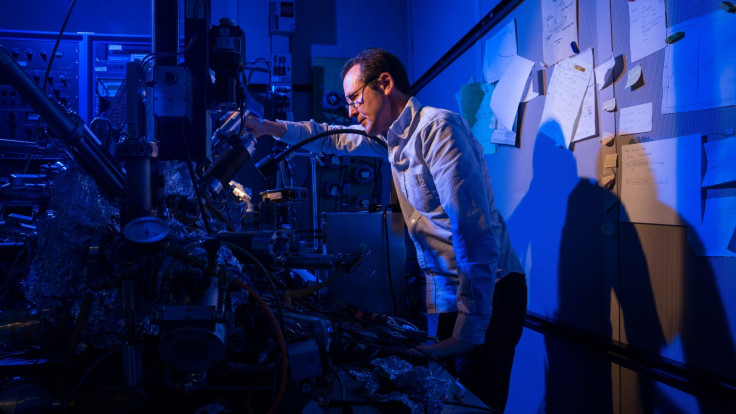IBM invents atomic hard drive that can store data within a single atom
IBM researchers have developed the world's smallest magnet and used it make a data storage breakthrough.

IBM's research arm has made a breakthrough in data storage by developing the world's smallest magnet and getting it to store one bit of data on a single atom, which means that in future storage devices could be able to store 1,000 times more information than today's hard disk drives and solid state memory chips.
At the moment, hard disk drives need roughly about 100,000 atoms to store a single bit, but the rewritable atomic hard drive prototype invented by IBM is able to read and write one bit on one atom. This is a huge achievement as it means that one day, it would be possible to store the entire Apple iTunes library of 35 million songs on a device the size of a credit card.
To achieve this breakthrough, the scientists determined that it is possible to independently read and write two magnetic atoms even if they are separated by a nanometre – i.e. a distance that is only a millionth of the width of a pin head.
To do this, they used IBM's scanning tunnelling microscope (which famously won the Nobel Prize for Physics back in 1986) to place an atom of the chemical element Holmium on top of a bed of magnesium oxide. This atom then became a magnet.
The magnesium oxide keeps each atom's magnetic poles stable, even in the presence of other magnets that might affect it. The orientation of the poles determines whether the atom is considered to be either a 0 or a 1, like the binary values assigned to bits in a classical computer.
To write data to this data storage device, an incredibly tiny sharp metal needle in the microscope produces an electrical current which induces the atom to flip its orientation so that it becomes either a 0 or a 1.
If you want to later read the information from the device, the microscope achieves this by measuring the magnetic current passing through each atom using a single iron atom as a sensor, which is a quantum mechanical technique called "spin resonance".
The reading received by the sensor varies depending on which of the atom's magnetic poles is facing upwards, and liquid helium is used to cool the atoms down so that they retain their magnetic orientations long enough for the system to read and write data to the device reliably.
"It doesn't get any smaller than a single atom. This is the ultimate storage feat – one bit on one magnetic atom. We're excited about the potential for dramatically different storage that's more compact and robust than anything we've previously seen," said Dr Andreas Heinrich, scientist for the Institute of Basic Science (IBS) in Korea and former IBM Research scientist, explaining that although the current prototype only consists of two atoms writing two bits of data, future devices will enable much more data to be stored.
The research, entitled "Atomic-scale sensing of the magnetic dipolar field from single atoms" is published in the journal Nature Nanotechnology.
© Copyright IBTimes 2025. All rights reserved.






















